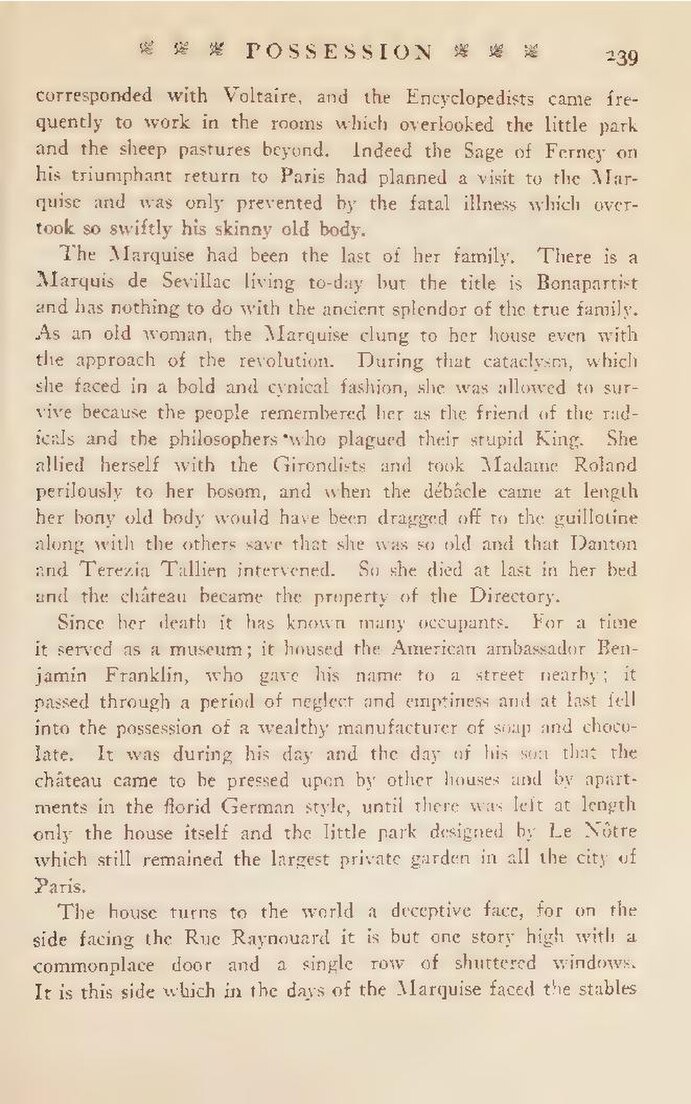corresponded with Voltaire, and the Encyclopedists came frequently to work in the rooms which overlooked the little park and the sheep pastures beyond. Indeed the Sage of Ferney on his triumphant return to Paris had planned a visit to the Marquise and was only prevented by the fatal illness which overtook so swiftly his skinny old body.
The Marquise had been the last of her family. There is a Marquis de Sevillac living to-day but the title is Bonapartist and has nothing to do with the ancient splendor of the true family. As an old woman, the Marquise clung to her house even with the approach of the revolution. During that cataclysm, which she faced in a bold and cynical fashion, she was allowed to survive because the people remembered her as the friend of the radicals and the philosophers who plagued their stupid King. She allied herself with the Girondists and took Madame Roland perilously to her bosom, and when the débâcle came at length her bony old body would have been dragged off to the guillotine along with the others save that she was so old and that Danton and Terezia Tallien intervened. So she died at last in her bed and the château became the property of the Directory.
Since her death it has known many occupants. For a time it served as a museum; it housed the American ambassador Benjamin Franklin, who gave his name to a street nearby; it passed through a period of neglect and emptiness and at last fell into the possession of a wealthy manufacturer of soap and chocolate. It was during his day and the day of his son that the château came to be pressed upon by other houses and by apartments in the florid German style, until there was left at length only the house itself and the little park designed by Le Nôtre which still remained the largest private garden in all the city of Paris.
The house turns to the world a deceptive face, for on the side facing the Rue Raynouard it is but one story high with a commonplace door and a single row of shuttered windows. It is this side which in the days of the Marquise faced the stables
